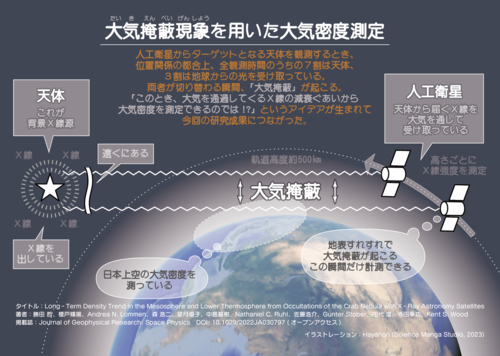2023-02-22 ペンシルベニア州立大学(PennState)
 Images of six candidate massive galaxies, seen 500-700 million years after the Big Bang. One of the sources (bottom left) could contain as many stars as our present-day Milky Way, according to researchers, but it is 30 times more compact. Credit: NASA, ESA, CSA, I. Labbe (Swinburne University of Technology). Image processing: G. Brammer (Niels Bohr Institute’s Cosmic Dawn Center at the University of Copenhagen). All Rights Reserved.
Images of six candidate massive galaxies, seen 500-700 million years after the Big Bang. One of the sources (bottom left) could contain as many stars as our present-day Milky Way, according to researchers, but it is 30 times more compact. Credit: NASA, ESA, CSA, I. Labbe (Swinburne University of Technology). Image processing: G. Brammer (Niels Bohr Institute’s Cosmic Dawn Center at the University of Copenhagen). All Rights Reserved.
◆「これらの銀河からの光をモデル化したペンシルバニア州立大学天文学・天体物理学助教授のジョエル・レハは、「これらの天体は、誰もが予想していたよりもはるかに巨大です。”この時点では、小さくて若い赤ちゃん銀河しか見つからないと思っていましたが、以前は宇宙の夜明けと理解されていたところに、我々の銀河と同じくらい成熟した銀河を発見したのです。”
◆NASAのジェームス・ウェッブ宇宙望遠鏡から初めて公開されたデータセットを使って、科学者の国際チームは、ビッグバンから約5〜7億年後、宇宙が現在の年齢の3%しかなかった頃に天の川と同じように成熟した天体を発見しました。この望遠鏡には、最も古い星や銀河が放つ光を検出する赤外線センサーが搭載されています。この望遠鏡は、私たちが知っている宇宙の始まりに近い、およそ135億年前にさかのぼることができるのです」とレジャは説明します。
◆「これは、私たちが初めてここまで遡って見たものなので、私たちが見ているものについて広い心を持つことが重要です」とレハは言いました。「このデータは、これらの天体が銀河である可能性を示していますが、私は、これらの天体のうちのいくつかは、隠された超巨大ブラックホールであることが判明する可能性があると思います。しかし、今回発見された質量は、宇宙のこの時期に知られている星の質量が、これまで考えられていたよりも最大で100倍も大きいことを意味します。たとえサンプルを半分に減らしても、これは驚くべき変化です。”
◆2月22日Natureに掲載された論文で、研究者達は、この6つの銀河が、誰もが予想していたよりもはるかに巨大である証拠を示し、宇宙のごく初期における銀河形成について科学者がこれまで理解していたことに疑問を投げかけています。
<関連情報>
- https://www.psu.edu/news/research/story/discovery-massive-early-galaxies-defies-prior-understanding-universe/
- https://www.nature.com/articles/s41586-023-05786-2
ビッグバンから 600 年後の赤い大質量銀河の集団 A population of red candidate massive galaxies ~600 Myr after the Big Bang
Ivo Labbé,Pieter van Dokkum,Erica Nelson,Rachel Bezanson,Katherine A. Suess,Joel Leja,Gabriel Brammer,Katherine Whitaker,Elijah Mathews,Mauro Stefanon & Bingjie Wang
Nature Published:DOI:https://doi.org/10.1038/s41586-023-05786-2
Abstract
Galaxies with stellar masses as high as ~ 1011 solar masses have been identified1–3 out to redshifts z ~ 6, approximately one billion years after the Big Bang. It has been difficult to find massive galaxies at even earlier times, as the Balmer break region, which is needed for accurate mass estimates, is redshifted to wavelengths beyond 2.5 μm. Here we make use of the 1-5 μm coverage of the JWST early release observations to search for intrinsically red galaxies in the first ≈ 750 million years of cosmic history. In the survey area, we find six candidate massive galaxies (stellar mass > 1010 solar masses) at 7.4 ≤ z ≤ 9.1, 500–700 Myr after the Big Bang, including one galaxy with a possible stellar mass of ~1011 solar masses. If verified with spectroscopy, the stellar mass density in massive galaxies would be much higher than anticipated from previous studies based on rest-frame ultraviolet-selected samples.



